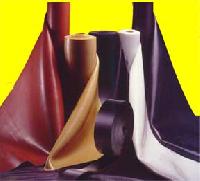Welcome to UniRubber, Inc.
Manufacturer / Exporter / Supplier Of SHEET & STRIP, Sponge Rubber
-
Year of Establishment
1978
-
Primary Business
Supplier
-
Number of Employees
1-9
Welcome to UniRubber, Inc.
Manufacturer / Exporter / Supplier Of SHEET & STRIP, Sponge Rubber

Year of Establishment
1978

Primary Business
Supplier

Number of Employees
1-9

Below is a list of our most common rubber styles. many other forlumas are available including special compounds to meet most specifications including military, aerospace and commercial. Any of our sheet rubbers can be processed into die cut parts, strips, sheets or pads.

Sponge rubber is made by incorporating into the compound a gas-producing chemical such as sodium bicarbonate, which expands the mass during the vulcanization process. Sponge rubber is manufactured in sheets, molded strips, and special shapes. Sheets and parts cut from sheets will usually have a surface impression since sheets are usually molded against a fabric surface which allows air to be vented during the expansion of the sponge. Molded strips will have open cells exposed at the ends of the part unless otherwise specified. Die-cut parts will have open cells on all cut edges. On parts where open cell surfaces cannot be tolerated this should be so specified. Trapped air, which may affect the finish, is a universal problem of sponge manufacturing due to the fact that sponge molds are only partially filled with uncured rubber, allowing for expansion to fill the mold. For this reason long andor complicated cross sections may require vents or multiple splices to effect low reject percentages. To minimize trapped air, it is common practice to use a considerable amount of a chemically inert dusting agent such as talc, mica, or starch, which is difficult to remove completely from the surface of the finished part, although molded closed cell parts prepared by transfer molding need not have this disadvantage. In addition to a normal mold skin surface, some parts are manufactured with an applied solid rubber skin or coating to give a more durable, water-resistant surface when exposed to weathering. This is usually applied by calendering a thin sheet of solid rubber compound (0.005 in.-O.040 in.; 0.12-1.0mm) and applying it to a sheet of sponge compound and placing this in a mold suitably parted to form skin on the exposed surfaces of the part. Since the solid skin must stretch to cover the surface of the mold during the blowing of the sponge compound, there are practical limitations to designs which can be made by this process, as when skin stretches, the thickness decreases and may ultimately break through. In addition to the above method, an applied skin may be formed by dipping a molded and cured part in latex or cement and depositing a coating on the surface of the part, followed by suitable drying and curing. This coating may be built up to desired thickness by multiple dipping. Limitations on this method are those inherent in most dipping methods such as a tendency to bridge slots or holes, loss of detail of molding, and uneven thickness of skin.
Share your thoughts with other customers for UniRubber, Inc.
Add Review